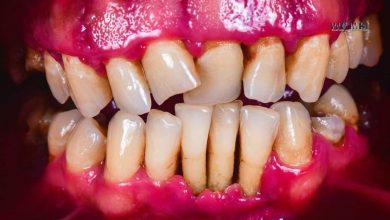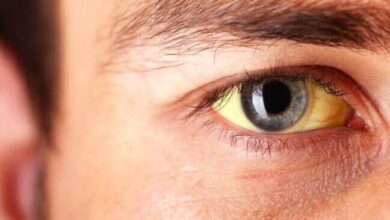Types of Hypoxia [Effects, Treatment & Prevention]

There are mainly 4 types of hypoxia. But what is hypoxia? Hypoxia is a condition where there is an inadequate supply of oxygen to the tissues or the tissues fail to utilize the oxygen in our body.
It is often defined as a deficiency of O2 at the tissue level. Hypoxia is differing from the hypoxemia and the anoxemia whereas hypoxemia and anoxemia refer especially to the states that have low or zero arterial supply.
Hypoxia in which t
Generalized hypoxia occurs to healthy people when they ascend to the high altitude where it causes altitude sickness. Hypoxia also occurs in the healthy people when the breathing mixes which the gases of low oxygen content, e.g, while driving under water. Hypoxia is a common complication of preterm birth in a newborn infant. Because lungs develop late in the pregnancy. Premature infants frequently posses underdeveloped lungs.
In this article, we have discussed the types of hypoxia, symptoms of hypoxia, effects of hypoxia, treatment and prevention of hypoxia.
Symptoms of hypoxia
The symptoms of hypoxia varies from person to person, the commonest symptoms are:
- Unconsciousness
- Disorientation
- Heaviness
- Nausea
- Headache
- Breathlessness
- Muscle twitching
- Blurring of vision
- Impaired judgment
- Fatigue
- Reduced work capacity
- Dyspnea
In severe cases, the person may reach comatose
Types of hypoxia
There are mainly 4 types of hypoxia which can be classified as following.
- Hypoxic hypoxia
- Anemic hypoxia
- Histotoxic hypoxia
- Stagnant hypoxia
Hypoxic hypoxia
Hypoxic hypoxia occurs in a condition where there is a decrease in the partial pressure of oxygen in arterial blood hence lowering the supply of oxygen that is reducing the amount of oxygen reaching the tissues.
This occurs when there is less oxygen in the inspired air or there may be any apparatus in the pathway that reduces the oxygen supply. Hypoxic hypoxia is the first types among the four types of hypoxia.
Occurrence
- It occurs at high altitude and dull ventilated is rooms.
- In the case of hypoventilation where there is obstruction paralysis of respiratory muscles and depression of respiratory centres
- During diffusion defect, this type of hypoxia can occur due to pulmonary oedema, fibrosis
- The haemoglobin level, A-V difference is the normal only partial pressure of oxygen is decreased
Anemic hypoxia
Anaemic hypoxia is a dangerous types of hypoxia. It is a condition where there is less haemoglobin content in the blood this may be due to anaemia. The blood fails to transport adequate oxygen to the tissues as there is no sufficient haemoglobin to carry it. In this case, the partial pressure of blood is normal.
Occurrence
- It happens in case carbon monoxide poisoning but the haemoglobin level is normal in blood but it tends to bind with CO rather with oxygen because they have more affinity with carbon monoxide (CO) hence they bind with CO to form carboxyhemoglobin (COHb). In this case, it is difficult to release of CO from Hb is very slow as they have high affinity. The oxygen fails to bind with haemoglobin and the tissues are deprived of oxygen.
- In case of severe Anemia, the haemoglobin levels are low hence no oxygen or low oxygen reaches tissues.
- The pressure of oxygen, A-V difference is normal but the haemoglobin level is declined.
Histotoxic hypoxia
Histotoxic types of hypoxia occur in a condition where even though there is adequate oxygen supply to the tissues but they fail to use it. As the tissues fail to utilize the oxygen the venous tension in o2 becomes high.
Occurrence
- It occurs in the case of cyanide poisoning as cyanide inhibits cytochrome oxidase. The tissue oxidation is paralyzed.
- In case of severe diphtheria synthesis of cytochromes is inhibited and the tissues fail to utilize oxygen.
- The pressure of oxygen, haemoglobin level is normal but A-V difference of pO2 is less.
Stagnant hypoxia
Stagnant hypoxia is a situation where there is a sluggish flow of blood. Hypoxia occurs as there is stagnation of blood as circulation is slow. This types of hypoxia can be due to less cardiac output or some secondary reasons which lower blood flow.
Occurrence
- It occurs in conditions of cardiac failure, vascular obstruction or circulatory shock.
- The partial pressure of oxygen, haemoglobin, A-V difference and saturation is normal.
Effects
The organ that is most affected by hypoxia is the brain , the heart, and the liver. If hypoxia is severe, there will be the irreversible damage of the organ within the 4 minutes of the onset. Coma, seizures, and death may occur in a severe case. Chronic milder hypoxia can also cause damage to the major organs of the body.
When the hypoxia is acute, symptoms often include motor incoordination and impaired judgment. Due to symptoms, the person with hypoxia sometimes erroneously thought to be intoxicated with alcohol.
Chronic hypoxia tends to have different symptoms such as fatigue, apathy, delayed reaction time, or reduced work capacity.
It’s not surprising that lungs disease are a significant cause of hypoxia, but there are many other causes as well as.
If you want to know more about the effects of Hypoxia, Read this BLOG!
Treatment
Main treatment for hypoxia is OXYGEN THERAPY where oxygen is supplied to the body in acceptable means. In severe cases hyperbaric oxygen therapy is administered, oxygen is supplied under high pressure.
Oxygen is supplied through various means
- Tents are used for children as they are uncomfortable with the cannula
- Oxygen masks are also used. It enters the mask at higher velocity
- Mechanical ventilators are used when a patient is semiconscious or in comatose. Oxygen is administered through a tracheal tube or intranasal tube.
In the condition of hypoxic hypoxia and anemic hypoxia, the use of oxygen therapy is successful. The first case the administration of oxygen increases the pressure inside lungs which facilitates oxygen diffusion between alveoli and blood. In the latter case, the level of oxygen dissolved in the blood increases thus increasing the supply of oxygen to the tissues.
In case of stagnant hypoxia oxygen therapy is not useful while in case of Histotoxic hypoxia hyperbaric oxygen therapy is administered.
Prevention
The best way to prevent hypoxia is to keep your asthma under control. Stick your asthma treatment plan.
- Take your medicine to prevent flares and need to use your rescue inhaler
- Eat right and stay active
- Know your asthma, trigger, and finds a way to avoid them
Work with your doctor to come with an asthma attack plan. So you will be able to know what to do when you are in trouble.
Summary
In simple word, lack of oxygen to tissue is known as Hypoxia. There are mainly four types of Hypoxia which are already described above. Here in this article, we knew the symptoms of the Hypoxia with their effects and treatment. The main treatment for Hypoxia is oxygen therapy. Eat right and stay active is one of the important preventive methods of hypoxia. you can know your asthma, trigger and also find the way to avoid them.




